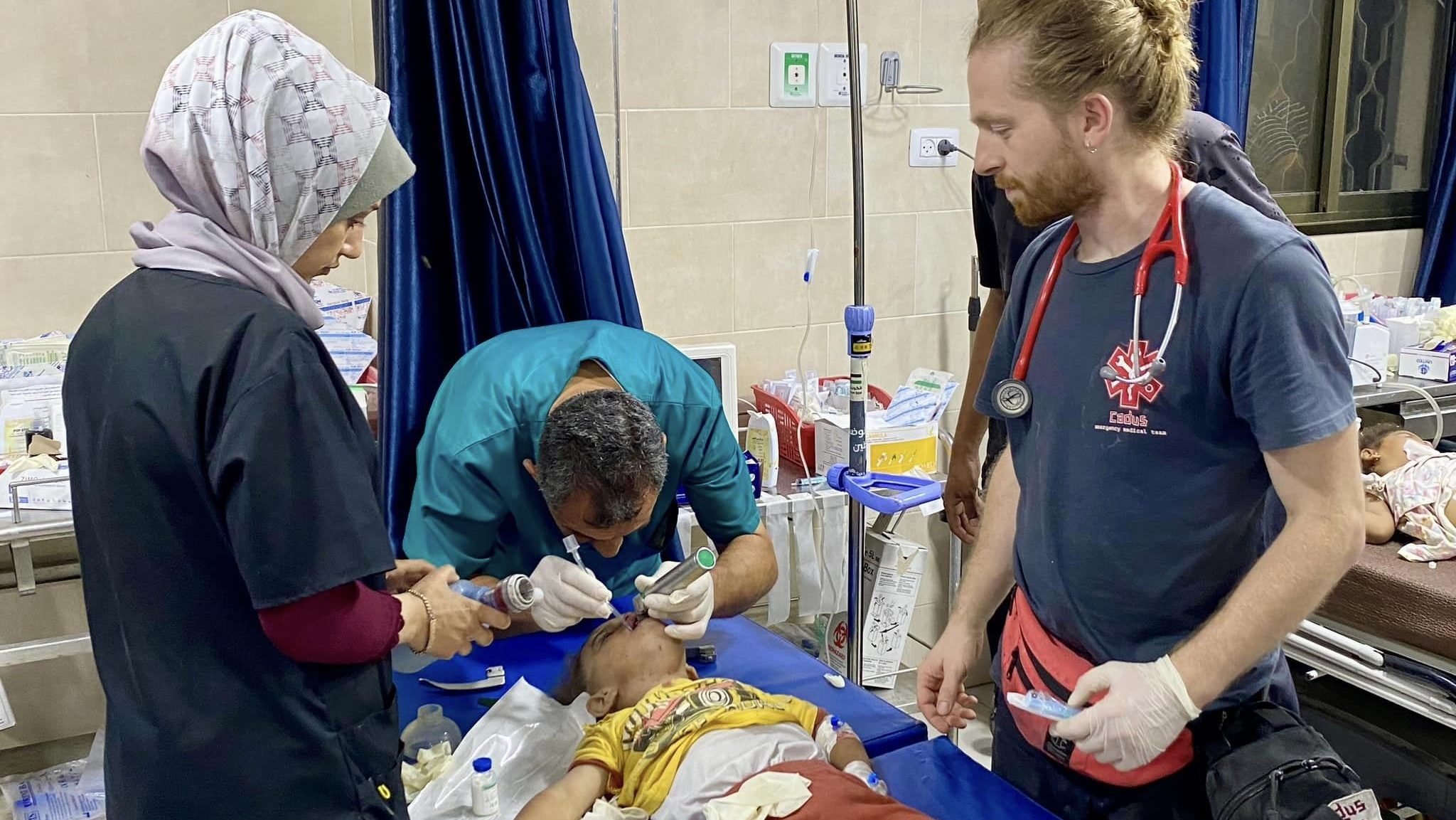Hunger in the Gaza Strip is killing children as Israel continues its attacks and obstructs food delivery to the enclave. These attacks have severely impacted international organizations and healthcare providers trying to offer nutrition support, increasing the risk of outbreaks and long-term effects on health.
Over 8,000 children under five have been diagnosed with acute malnutrition, with 32 deaths confirmed by the World Health Organization (WHO), including 28 children in the same age group. UNICEF warns that thousands of children who were receiving nutrition support have been cut off due to increased assaults in southern Gaza. The numbers are almost certainly an underestimation, considering that collection of data in the current circumstances is hampered.
The hunger in Gaza is not solely due to a lack of humanitarian aid. James Smith, a physician who recently returned from a medical mission in the Strip, told Democracy Now! that it is crucial to understand hunger in Gaza within the broader context of Israeli violence. “This overfixation on the number of trucks entering Gaza […] is a distraction from the violence and its many manifestations,” he warned.
Read more: The UN Commission of Inquiry accuses Israel of committing “crimes against humanity” during the ongoing Gaza war
The ongoing starvation, bombardments on health facilities, arrests of health workers, and blocked roads leading to hospitals are devastating for everyone, especially women and children. UNICEF refers to an “unbearable” level of child deaths.
Neonatal and maternity units have been decimated, with only four neonatal intensive care units operational. All of the units are operating at 500% capacity, with several babies sharing a single incubator. Hospitals lack food for infants admitted for hunger-related illnesses, and mothers cannot breastfeed due to their own hunger.
Israel also continues to attack health workers, with 55 specialist doctors killed since October 7. The People’s Health Movement warns that such losses will echo throughout hospital services, “as the killing of one specialist can cripple certain hospital services in entire areas for years.”
Around 128 health workers, including doctors, nurses, and paramedics, remain incarcerated, including those from the Palestine Red Crescent Society (PRCS) and AWDA – Health and Community Association. Among them is Ahmed Muhanna, director of Al-Awda Hospital in northern Gaza: PHM and allies have gathered close to 75,000 signatures for his release and the release of other kidnapped health workers.
Read more: Healthcare workers protest AMA’s silence on genocide in Gaza
Intimidation of health staff is widespread in the West Bank as well. Itta Helland-Hansen, a project coordinator with Doctors Without Borders (MSF) in Jenin and Tulkarem, recently spoke about the latest attacks on the camps. “Every single paramedic I have spoken to has explained situations where they have been personally harassed, physically assaulted, and hindered while trying to provide emergency medical care. Several have been threatened, detained, physically assaulted, and some even shot at,” she described.
While those living in Jenin theoretically have access to a nearby hospital, a two-minute walk down the road usually becomes an hours-long wait, marked by more threats of physical assault. Roads get blocked by armored vehicles, and snipers are placed around hospitals, instilling fear among those who need medical care. As a result, many of them, even those acutely requiring assistance, choose not to risk going to the hospital. “In most MSF projects, we mitigate a gap in healthcare. Here, healthcare is available down the road, but when it is needed the most, it is deliberately made inaccessible,” Helland-Hansen concluded.
People’s Health Dispatch is a fortnightly bulletin published by the People’s Health Movement and Peoples Dispatch. For more articles and subscription to People’s Health Dispatch, click here.





